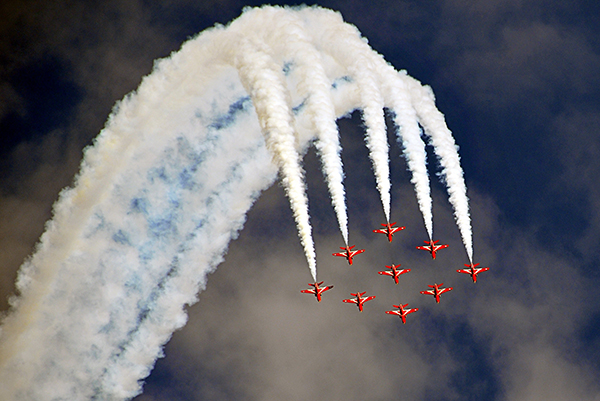Karsun Solutions uses our GoLean methodology to delight our customers through the rapid delivery of high quality software. We built GoLean.io to share the powerful tools and insights behind this methodology. This quick start series is designed to help those new to GoLean to understand the methodology’s core concepts.
GoLean.io combines the best of Lean, Agile, and DevOps principles to deliver innovative, high quality software quickly. Briefly, Lean emphasizes data-driven continuous improvement, Agile implements flexible people-first development strategies, and DevOps encourages proactive collaboration between development and operations to ensure stability. This marriage of techniques is designed to help teams continuously improve, quickly adapt to changing requirements, and proactively collaborate to reduce risk.

Introducing the OODA Loop
The GoLean approach to Lean, Agile, and DevOps is actually rooted in the military strategy known as the Observe-Orient-Decide-Act (OODA) loop. The strategy was developed by John Boyd, an American pilot that flew F-86 Sabres during the Korean War. As an instructor, he earned the nickname, “Forty Second Boyd” because he could outmaneuver an opposing pilot in forty seconds or less. The secret to his success was Boyd’s OODA loop. Influencing later wars and pilots, OODA’s philosophy spread into the technology sector. Jeff Sutherland notes OODA influenced his development of the Scrum, a flavor of Agile development, in his book Scrum: The Art of Doing Twice the Work in Half the Time.

Observe Current Performance
The first step in the OODA loop is Observe. In air combat Boyd was talking about using his senses to collect information about the current situation. For instance, in my plane, I am above a forest, and have clear visibility. In GoLean.io our Observe step gives us real time information about our teams’ performance. For instance, as a team it generally takes us 6 days or less to resolve defect.
Orient toward the Objective
The second step is Orient. In the air the pilot is both forming a mental model of their own performance (direction, objectives etc.) and a model of their opponent’s performance. The goal is for the pilot to mentally determine where both parties are going before the opponent, so the pilot can outmaneuver the competition. Initially, using GoLean.io, teams determine if they are on track to achieve their objectives. They use visualizations like GoLean.io’s Target Date Probability. Later they use other visualizations to understand the relationship between their processes and outcomes.
Decide on a Strategy
The third step is Decide. This is simply the process where the pilot determines the best course of action given the information available. In this step the pilot is not yet taking action, just assessing all the options available and determining whether to fight or flee. GoLean.io has tools that allows teams to set a goal, and then they review a menu of best practices to achieve that goal.
Act on the Plan
The pilot concludes the first OODA loop by taking action against their opponent. Since the tool chain is integrated in GoLean.io action comes in the form of helpful policy automations. For the pilot, decision making becomes second nature as they are attuned to actions that have been successful in the past. This allows the pilot to skip from Orient to this final step. Since GoLean.io takes a data-driven approach we can reduce the experience curve and eliminate guesswork. In some cases, the practice can even be automated to reduce the reliance on the decision step and outmaneuver the competition!
If you are ready to jump right in and try out GoLean.io head on over to our Free Trial. Join us for next the post introducing Lean principles!
P.S. John Boyd’s impact on military tactics stretches beyond OODA, to learn more visit your local bookstore or library and check out Boyd: The Fighter Pilot Who Changed the Art of War.
